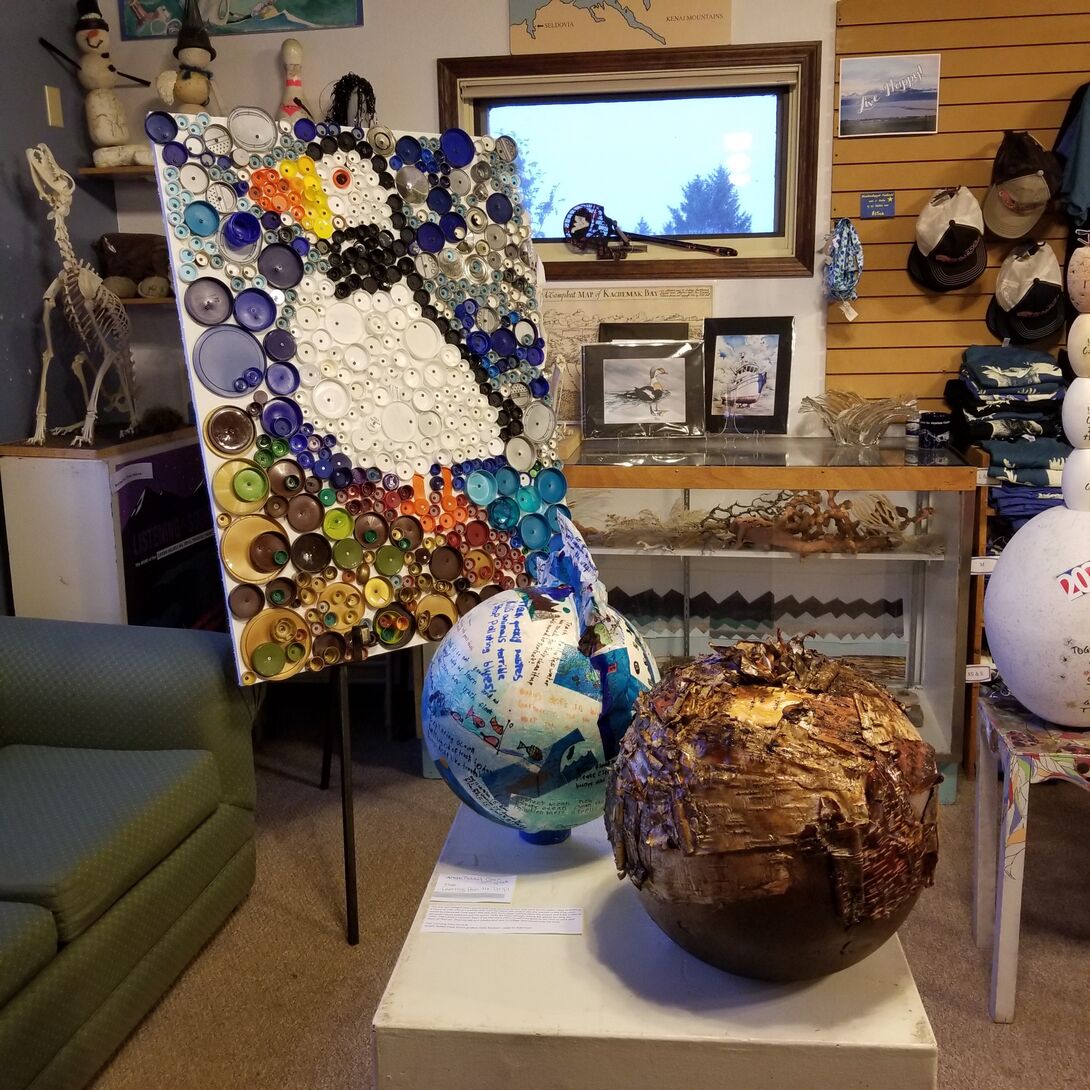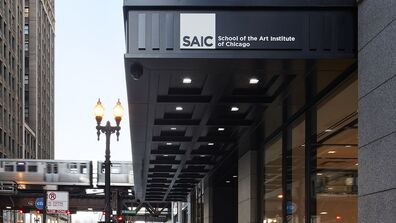
Building Bridges Through Art

In the fall of 2019, alum Leslie Robertson (MA 2004) was in a fourth-grade classroom in Anchorage, Alaska, surrounded by students, art supplies, and buoys. Robertson was partnering with the class on a project that had two objectives: one, teach students about the impact of marine debris, and two, show them how discarded items like buoys could be made into works of art.
Robertson believes in using art to help deepen people’s understanding of the world around them. When the pandemic hit, she knew her work both as an art therapist and as a community connector had to continue, even if socially distanced.
Robertson studied Art Therapy at the School of the Art Institute of Chicago (SAIC), and has always championed art’s ability to heal. In addition to her work in elementary classrooms, she facilitates trauma-informed therapy for youth at an in-patient hospital and also counsels active duty service members and their families.
It’s amazing to see youth and clinical staff engage with materials, to explore something uniquely creative and feel a sense of giving back to their community.”
Leslie Robertson
Since moving to Alaska seven years ago, Robertson has partnered with local schools and nonprofits to help supplement the efforts of their existing staff. Feeling isolated herself during the pandemic, she knew community art projects could be a method for connecting and bringing people together. She reached out to the same class at Rabbit Creek Elementary she’d worked with over the fall, led by Holly Rinehart.
The second project they undertook was a collaboration with the Alaska Fisher House, a center and program for supporting members of the military and their families while they receive medical care. “We had a discussion on empathy and family traditions via Zoom with Ms. Rinehart’s class. Then the students created empathy drawings, including written messages which I combined into an altered book.” Robertson said. She then delivered the finished art books to the Fisher House, where she co-led a virtual field trip with the facility manager, Jenny Hall. Rinehart encouraged her students to ask questions and to learn more about the center and how it serves the community.
“They were excited to learn about a program that takes care of people, especially during the pandemic,” Robertson said. Rinehart agreed. “My students had an incredible sense of pride and ownership,” she shared.
Given the positive response from the students and the Alaska Fisher House, Robertson and Rinehart decided to collaborate on a similar project for the Hospice of Anchorage. This time, they wanted to create and send cards not just to hospice patients, but messages of gratitude to the staff and other Alaska healthcare workers. The cards even caught the attention of Governor Mike Dunleavy, who joined a Zoom meeting with Rinehart’s class and Amy Tribbett, executive director of Hospice of Anchorage. They answered questions and thanked the students for their artwork.

“These cards mean everything to our patients and their families. Isolation is difficult for our patients, and knowing that our community is with them during these unprecedented times is so meaningful,” said Amy Tribbett.
After the success of these programs, Robertson has begun to partner with other nonprofits and youth programs across the state, using art to build bridges during a time of social distance. “The opportunity for community engagement despite social distancing has really grown, as people are eager to connect and participate in collaborative projects,” she said.
It’s obvious to Robertson how essential art can be during a time like this, no matter what the individual’s age or skill level. “It’s amazing to see youth and clinical staff engage with materials, to explore something uniquely creative and feel a sense of giving back to their community,” Robertson said. “And when those days are filled with isolation, having a part in a collaborative project can bring connection and a greater sense of well-being in the community.”
